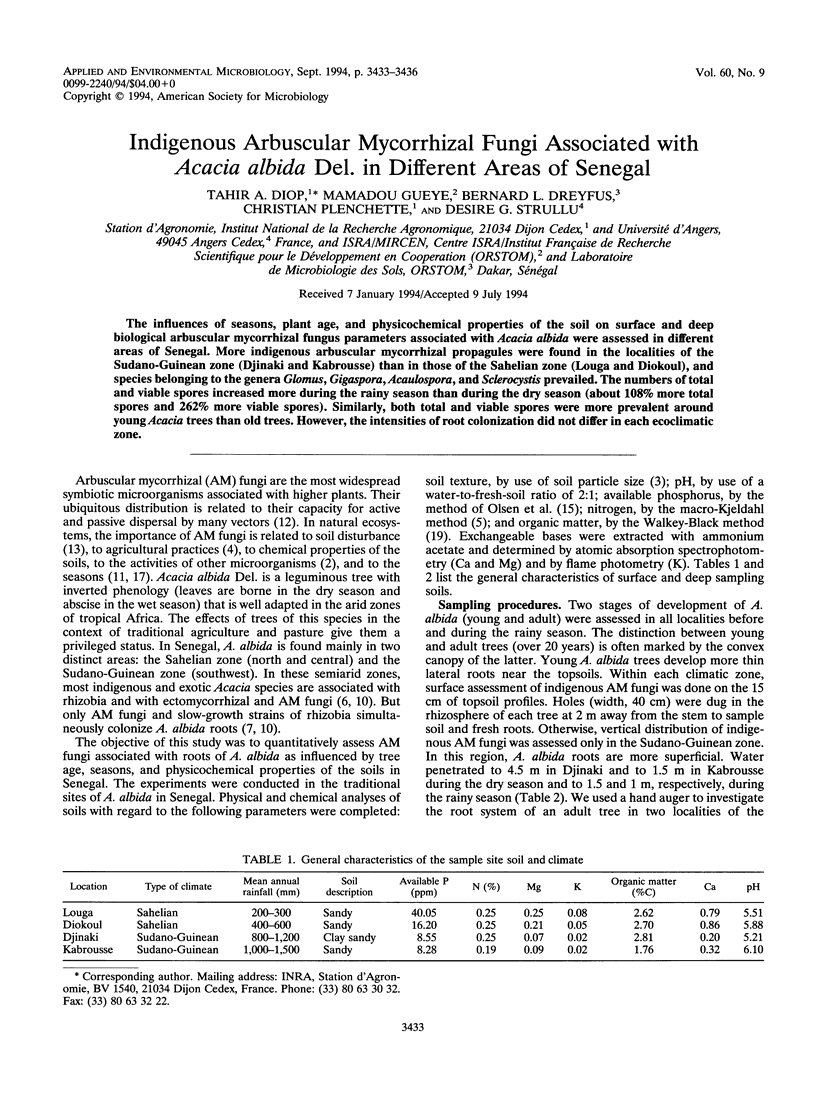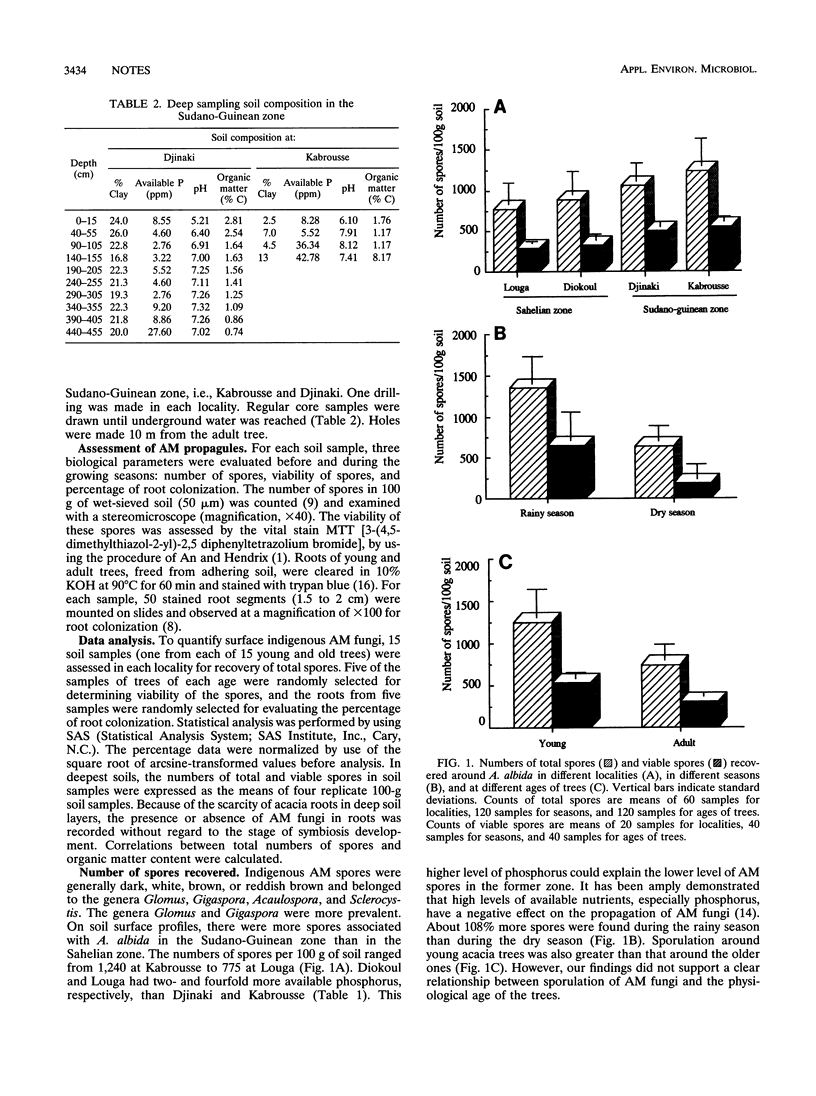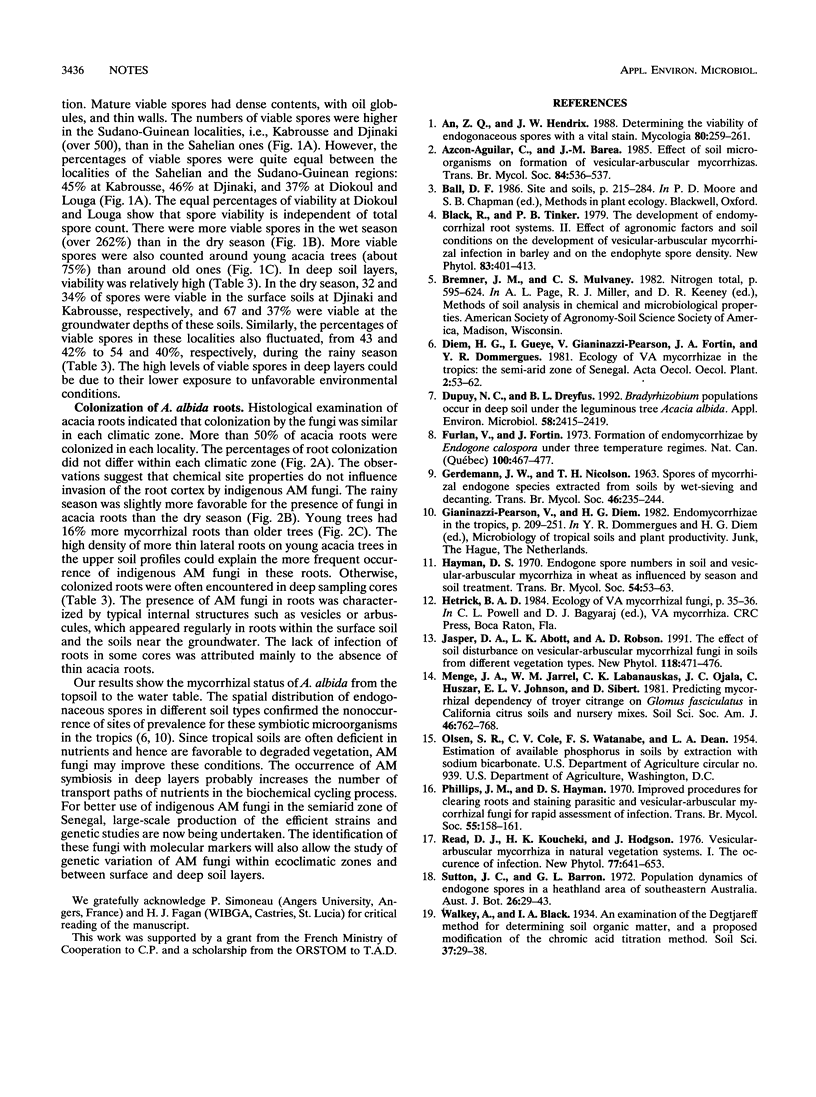Abstract
The influences of seasons, plant age, and physicochemical properties of the soil on surface and deep biological arbuscular mycorrhizal fungus parameters associated with Acacia albida were assessed in different areas of Senegal. More indigenous arbuscular mycorrhizal propagules were found in the localities of the Sudano-Guinean zone (Djinaki and Kabrousse) than in those of the Sahelian zone (Louga and Diokoul), and species belonging to the genera Glomus, Gigaspora, Acaulospora, and Sclerocystis prevailed. The numbers of total and viable spores increased more during the rainy season than during the dry season (about 108% more total spores and 262% more viable spores). Similarly, both total and viable spores were more prevalent around young Acacia trees than old trees. However, the intensities of root colonization did not differ in each ecoclimatic zone.
Full text
PDF



Selected References
These references are in PubMed. This may not be the complete list of references from this article.
- Black M. M., Lasek R. J. Axonal transport of actin: slow component b is the principal source of actin for the axon. Brain Res. 1979 Aug 10;171(3):401–413. doi: 10.1016/0006-8993(79)91045-x. [DOI] [PubMed] [Google Scholar]
- Dupuy N. C., Dreyfus B. L. Bradyrhizobium Populations Occur in Deep Soil under the Leguminous Tree Acacia albida. Appl Environ Microbiol. 1992 Aug;58(8):2415–2419. doi: 10.1128/aem.58.8.2415-2419.1992. [DOI] [PMC free article] [PubMed] [Google Scholar]


